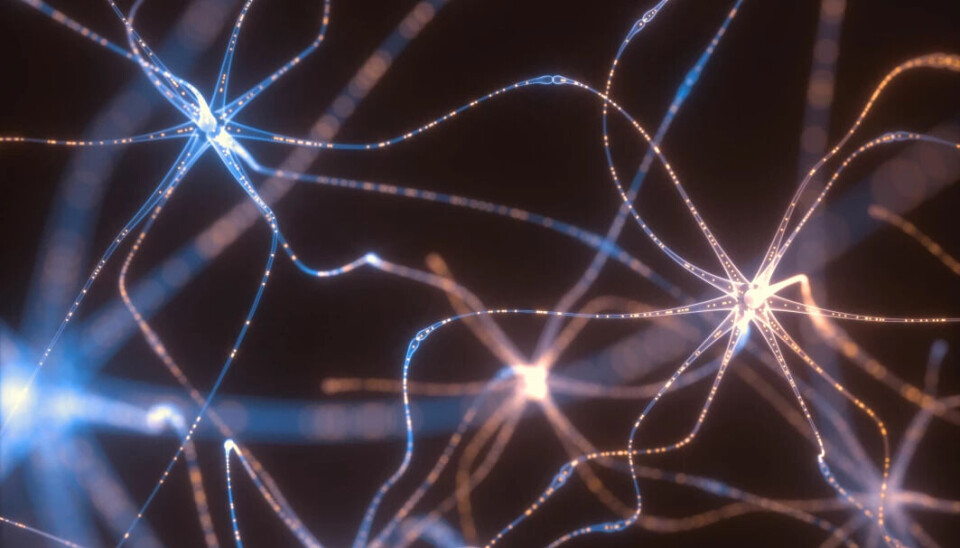THIS ARTICLE/PRESS RELEASE IS PAID FOR AND PRESENTED BY University of Oslo - read more

Alzheimer’s disease: Researchers find signs of weakened connections in the brain
Why does it become harder to concentrate when you have Alzheimer’s disease? The explanation is perhaps that the signals transmitted from glial cells to nerve cells are disrupted.
Approximately 100,000 Norwegians have dementia. Many of them have Alzheimer’s disease.
The brain gets ‘senile plaques’, nerve cells are destroyed and brain functions fail. There is still a lot we do not know about the disease.
Why does it become more difficult to remember? Why are you no longer able to maintain your levels of attention and concentration?
A group of scientists at the Institute of Basic Medical Sciences at the University of Oslo (UiO) have found a new, important piece of the puzzle in understanding how the brains of Alzheimer’s patients work. The hope is that the findings can lay the foundation for developing new ways of treating Alzheimer’s disease in the future.
“We use advanced laser microscopes worth several million Norwegian kroner that now allow us to look into the brains of awake Alzheimer’s mice. In previous studies, scientists have studied mice that have been anaesthetised,” Rune Enger says.
He is an associate professor at the Letten Centre which is part of the Institute of Basic Medical Sciences at UiO.

Studied pupil responses, behaviour and activity in the brain
In a new study, Enger and colleagues have studied types of brain cells called astrocytes. They are important handymen in the brain that are located around the nerve cells and act as support cells. The cells make it possible for the nerve cells to function normally.
“Astrocytes use calcium signals inside the cell to communicate. It is thought that these signals can help coordinate nerve cell activity over a large area,” Enger explains.
The scientists studied several things: what happened to the pupils of the mice with Alzheimer’s when they moved, what the mice did at the same time and what happened inside the brain.
Using genetically encoded nanosensors that light up where there is activity in the brain, they were able to study the calcium signals produced by the astrocytes. They could then compare what happened in Alzheimer’s mice with healthy mice.
“Among other things, the mice received a sudden puff of air on their faces so that we could see what happened when they were startled,” Enger says.
Calcium signals in astrocytes were reduced in Alzheimer’s mice
Because the scientists were able to study mice that were not anaesthetised but were free to move around, a slightly different picture emerged of what happens in the brain than in previous studies.
He says that those scientists who studied anaesthetised Alzheimer’s mice saw that activity in these cells increased. Anaesthesia influences astrocytes.
In the new study, researchers found that it was not a given that activity increased.
"Instead, we saw that calcium signals in the astrocytes were weaker when the mice ran about and when they were startled compared to healthy mice. The astrocytes in the sick mice were also significantly different from the healthy mice in that they were larger and had altered the shape and expression of specific proteins linked to inflammation,” Enger says.
Likely damage to connections in the brain
“One can imagine that the role of astrocytes is a bit like the volume knob on a radio that can affect many nerve cells at the same time. In the Alzheimer’s mice, this mechanism seems to be disrupted," he says.
The study shows that the reduced activity of astrocytes may be due to the connection being damaged between these cells and one of the brain’s systems related to stress and concentration.
Enger envisions a possible future drug that could help people with Alzheimer’s disease.
“Perhaps in the future, we can use drugs that affect calcium activity in astrocytes in order to affect brain function in those with this diagnosis?” he asks.
Reference:
Åbjørsbråten et al. Impaired astrocystic Ca2+ signaling in awake-behaving Alzheimer's disease transgenic mice, eLife, vol. 11, 2022. DOI: 10.7554/elife.75055

This article/press release is paid for and presented by the University of Oslo
This content is created by the University of Oslo's communication staff, who use this platform to communicate science and share results from research with the public. The University of Oslo is one of more than 80 owners of ScienceNorway.no. Read more here.
See more content from the University of Oslo:
-
Queer opera singers: “I was too feminine, too ‘gay.’ I heard that on opera stages in both Asia and Europe”
-
Putin’s dream of the perfect family
-
How international standards are transforming the world
-
A researcher has listened to 480 versions of Hitler's favourite music. This is what he found
-
Researcher: "AI weakens our judgement"
-
New, worrying trend among incels, according to researcher





































